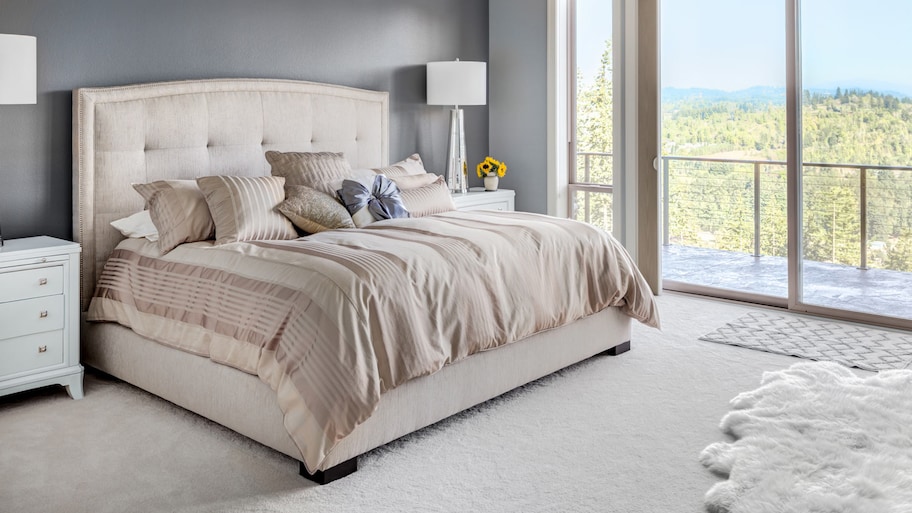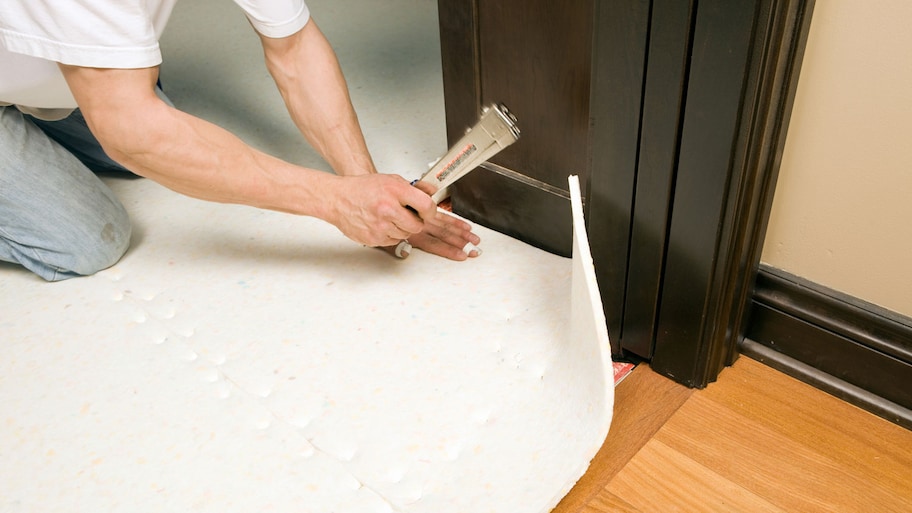Everything You Need to Know About Carpet Padding, From Cost to Benefits
Padding is your carpet’s invisible protector


Highlights
Provides cushioning underneath a thin roll of carpet
Extends the life of carpet
Available in foam, fiber, or rubber materials
Carpet padding is an important aspect of any carpeted room, even though you never see it. The cushioned pad sits underneath your roll of carpet, making it more comfortable for those times when you and the kids (and probably the pets, whether invited or not) are sitting on the floor, enjoying a movie and a big bowl of popcorn.
What Is Carpet Padding?
Carpet padding is a cushioned layer you add underneath the roll of carpet. The padded layer makes the carpeting more comfortable, which is important when you and the family are playing or sitting at ground level. It also extends the life of the carpeting.
You certainly can install carpeting without padding, but you’ll likely regret the decision. You simply cannot enjoy your carpet installation as much without a padded layer underneath.
Why You Need Carpet Padding
Beyond adding cushioning, padding will provide important benefits to your carpet installation. You may love the idea of gaining more cushioning under the carpeting for playtime for your kids and pets.
Here’s a look at the benefits of carpet padding:
Extends lifespan: The pad keeps the back of the carpet roll away from the subfloor, which will extend the carpet’s life by preventing friction that may eventually lead to holes in the carpeting.
Absorbs noise: The softer material used in carpet padding will absorb noise from people walking across the carpet.
Enhances comfort: If placing carpeting over a cold subfloor like cement, padding provides thermal insulation, delivering more comfort when on the carpet.
Easier to clean: With the pad in place underneath the carpet, a vacuum cleaner will have an easier time pulling dirt and debris out of the carpet fibers versus if the carpet rests directly against the subfloor.
Improves the look: A high-quality carpet pad can prevent the carpet from feeling loosely installed or from forming carpet wrinkles.
Types of Carpet Padding
You might spend most of your time deciding if an oatmeal-colored carpet would look better in your bedroom versus light gray, but don’t forget about the padding. It’s an important part of the installation process that’ll affect the way your carpet feels and improve its lifespan.
But what type of carpet padding is right for your home? Here’s a look at the options:
Fiber: Synthetic fibers and natural fibers are both possible in carpet padding options. They’re not as soft as foam but they’re durable.
Foam: A rebond pad is the least-expensive foam carpet padding. However, for areas with heavier foot traffic, a frothed urethane foam pad is a better option, as it is highly durable. A memory foam pad is another option, and it yields the highest level of cushioning. Just don’t use it in areas of high foot traffic.
Rubber: Rubber is more common as a rug pad than a carpet pad, but it will yield a higher level of durability than foam or fiber carpet pads. It is more expensive than the others too.
How Do You Install Carpet Padding?

During carpet installation, you or the installer will start by laying out the roll of carpet padding. The pad can go directly over the subfloor, although it should not go over the top of the carpet tack strips at the perimeter of the room, if you’re using them.
Then, you’ll staple the edges of the pad to the edges of the tack strips. Alternatively, you can use adhesive to glue the pad to the subfloor.
The majority of the time, you will purchase a roll of carpet padding separately from the roll of carpet. However, some models of carpet rolls will have padding attached to the back, allowing for installation as a single piece.
Cost of Carpet Padding
Because padding extends the lifespan of carpet while enhancing comfort, it can be a good investment.
The cost of carpet padding will be anywhere from $0.50 to $2.75 per square foot, depending on the material. If you choose to have a contractor install it, you will pay roughly $2 per square foot for this service.
Padding certainly adds to your costs, but when you consider that it makes carpet last longer, it almost pays for itself.
